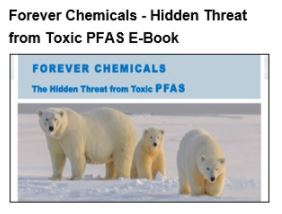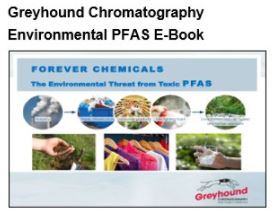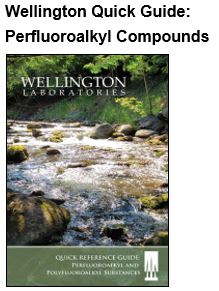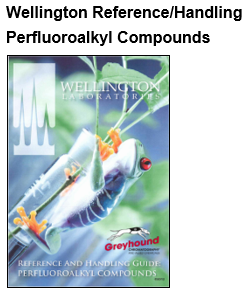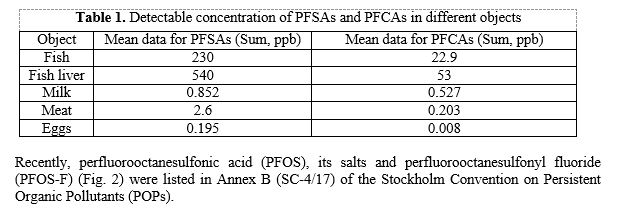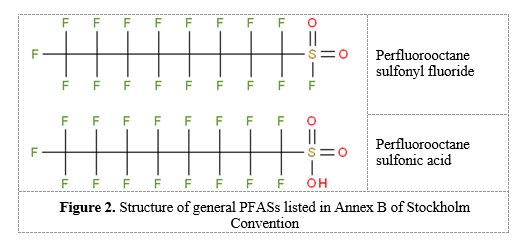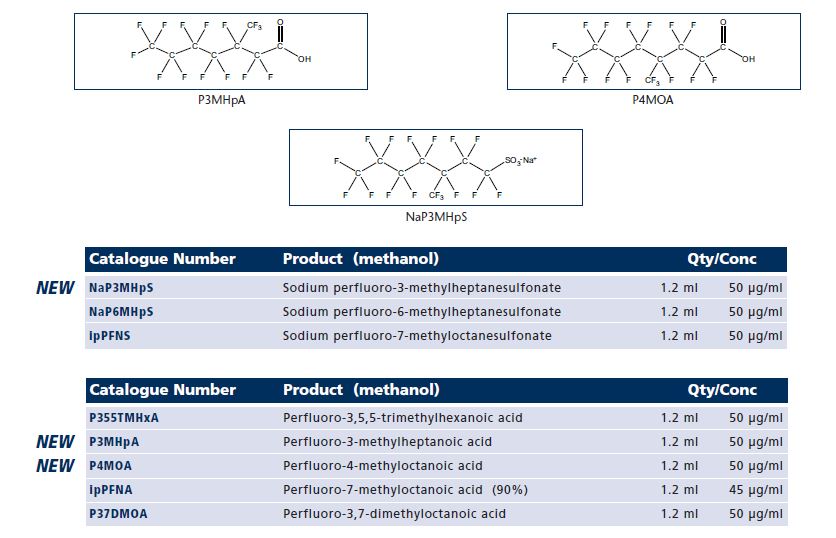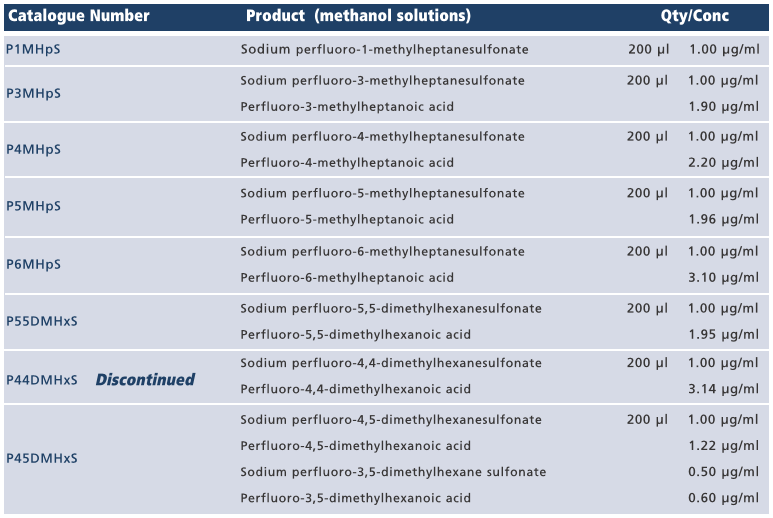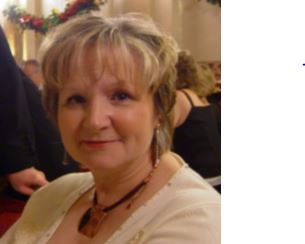3,6-Dibromo-9H-carbazole Certified Reference Standard


Halogenated carbazoles have recently been recognised as emerging environmental contaminants. Although there exact source has not been determined, both modern and historic sources (LED manufacturing and halogenated indigo dyes respectively) have been suggested. Since certain halogenated carbazole congeners can be lost during acid silica clean-up, it is very important that reference standards be used to monitor recoveries when processing samples.
Wellington Laboratories are the primary source of Standards for branched isomers, linear perfluoroalkyl carboxylic acids, perfluoroalkane sulfonates, Certified Reference Standards, EPA Method 23, EPA Method 513, EPA Method 1613, EPA Method 1668, EPA Method EPA Method 8280, EPA Method 8290, European Method EN-1948 and World Health/EPA Standards, C13 and Native Dioxins, Furans, PCBs and Brominated Diphenyl Ethers, Brominated Dioxins and Furans, Methylated PCDDs and PCDFs, Fluorinated Compounds.
3,6-Dibromo-9H-carbazole Certified Reference Standards - Buy Online HERE
Halogenated Carbazole Certified Reference Standards from Wellington Laboratories - more info HERE
For over 30 years Greyhound Chromatography has been supplying high quality Chromatography consumables to laboratories around the world. Greyhound’s extensive range covers all areas of Environmental, Petrochemical, Food, Forensics, Chemical and Pharmaceutical analysis. Backed by a highly experienced technical services team, Greyhound is the preferred source amongst today’s analysts.
Greyhound Chromatography is pleased to supply Wellington Laboratories Certified Reference Standards and Materials to Research and Analysis laboratories worldwide.
3-Chloro-9H-carbazole Certified Reference Standard


Wellington Laboratories are the primary source of Standards for EPA Method 23, EPA Method 513, EPA Method 1613, EPA Method 1668, EPA Method 8280, EPA Method 8290, European Method EN-1948 and World Health/EPA Standards, C13 and Native Dioxins, Furans, PCBs and Brominated Diphenyl Ethers, Brominated Dioxins and Furans, Methylated PCDDs and PCDFs, Fluorinated Compounds and more.
CCZ-3 3-Chloro-9H-carbazole Buy online HERE
For over 30 years Greyhound Chromatography has been supplying high quality Chromatography consumables to laboratories around the world. Greyhound’s extensive range covers all areas of Environmental, Petrochemical, Food, Forensics, Chemical and Pharmaceutical analysis. Backed by a highly experienced technical services team, Greyhound is the preferred source amongst today’s analysts.
Greyhound Chromatography is pleased to supply Chem Service Certified Reference Standards to Research and Analysis laboratories worldwide.
1,3,6-Tribromo-9H-carbazole Halogenated Carbazole Certified Reference Standard


Wellington Laboratories are the primary source of Standards for branched isomers, linear perfluoroalkyl carboxylic acids, perfluoroalkane sulfonates, Certified Reference Standards, EPA Method 23, EPA Method 513, EPA Method 1613, EPA Method 1668, EPA Method EPA Method 8280, EPA Method 8290, European Method EN-1948 and World Health/EPA Standards, C13 and Native Dioxins, Furans, PCBs and Brominated Diphenyl Ethers, Brominated Dioxins and Furans, Methylated PCDDs and PCDFs, Fluorinated Compounds.
For over 30 years Greyhound Chromatography has been supplying high quality Chromatography consumables to laboratories around the world. Greyhound’s extensive range covers all areas of Environmental, Petrochemical, Food, Forensics, Chemical and Pharmaceutical analysis. Backed by a highly experienced technical services team, Greyhound is the preferred source amongst today’s analysts.
1,3,6-Tribromo-9H-carbazole Halogenated Carbazole Certified Reference Standards - Buy Online HERE
Greyhound Chromatography is pleased to supply Wellington Laboratories Certified Reference Standards and Materials to Research and Analysis laboratories worldwide.
1,3,6,8-Tetrachloro-9H-[13C12]carbazole Certified Reference Standard


Wellington Laboratories are the primary source of Standards for EPA Methods 23, 513, 1613, 1668, 8280, 8290, European Method EN-1948 and World Health/EPA Standards, C13 and Native Dioxins, Furans, PCBs and Brominated Diphenyl Ethers, Brominated Dioxins and Furans, Methylated PCDDs and PCDFs, Fluorinated Compounds and more.
Wellington Laboratories has been committed to providing high quality reference standards and exceptional customer service since its inception in 1980. An acute awareness of trends in the environmental community and a dedication to research and development has allowed us to synthesize a variety of emerging contaminants over the years. A few examples of The Science Behind Wellington are provided below for your review.
Halogenated carbazoles have recently been recognized as emerging environmental contaminants, but
research groups have been reporting their existence in environmental samples since 1984. There may be
multiple sources of these pollutants, but it has recently been suggested that they were produced as by-
products during the synthesis of halogenated indigo dyes. Since unsubstituted carbazoles are known to be
lost during acid silica clean-up, it is very important that reference standards be used when processing
samples.
In order to aid researchers in the detection of halogenated carbazoles in environmental samples,
Wellington has produced certified reference standards of selected halogenated carbazoles
CCZ-3
CCZ-36
CCZ-1368
CCZ-2367
BCZ-3
BCZ-27
BCZ-136
BCZ-1368
1-B-36-CCZ
18-B-36-CCZ
as well as two certified reference standards of mass-labelled chlorinated carbazoles (MCCZ-36 and MCCZ-1368).
For over 40 years Greyhound Chromatography has been supplying high quality Chromatography consumables to laboratories around the world. Greyhound’s extensive range covers all areas of Environmental, Petrochemical, Food, Forensics, Chemical and Pharmaceutical analysis. Backed by a highly experienced technical services team, Greyhound is the preferred source amongst today’s analysts.
Greyhound Chromatography is pleased to supply Wellington Laboratories' Certifieded Reference Standards and materials to Research and Analysis laboratories worldwide.
Native 3,6-Dichloro-9H-[13C12]carbazole
Native & Mass-Labelled Halogenated Carbazoles


Halogenated carbazoles have recently been recognised as emerging environmental contaminants. Although there exact source has not been determined, both modern and historic sources (LED manufacturing and halogenated indigo dyes respectively) have been suggested. Since certain halogenated carbazole congeners can be lost during acid silica clean-up, it is very important that reference standards be used to monitor recoveries when processing samples.
Wellington Laboratories are the primary source of Standards for EPA Methods 23, 513, 1613, 1668, 8280, 8290, European Method EN-1948 and World Health/EPA Standards, C13 and Native Dioxins, Furans, PCBs and Brominated Diphenyl Ethers, Brominated Dioxins and Furans, Methylated PCDDs and PCDFs, Fluorinated Compounds and more.
MCCZ-36: 3,6-Dichloro-9H-[13C12]carbazole
Other Native and Mass-Labelled Halogenated Carbazoles available from Wellington Laboratories:
MCCZ-1368: 1,3,6,8-Tetrachloro-9H-[13C12]carbazole
CCZ-3: 3-Chloro-9H-carbazole
CCZ-36: 3,6-Dichloro-9H-carbazole
CCZ-1368: 1,3,6,8-Tetrachloro-9H-carbazole
CCZ-2367: 2,3,6,7-Tetrachloro-9H-carbazole
BCZ-3: 3-Bromo-9H-carbazole
BCZ-27: 2,7-Dibromo-9H-carbazole
BCZ-136: 1,3,6-Tribromo-9H-carbazole
BCZ-1368: 1,3,6,8-Tetrabromo-9H-carbazole
1-B-36-CCZ: 1-Bromo-3,6-Dichloro-9H-carbazole
18-B-36-CCZ: 1,8-Dibromo-3,6-Dichloro-9H-carbazol
Halogenated carbazoles have recently been detected in soil and water samples, but their environmental effects and fate are unknown. Eighty-four soil samples obtained from a site with no recorded history of pollution were used to assess the persistence and dioxin-like toxicity of carbazole and chlorocarbazoles in soil under controlled conditions for 15 months. Soil samples were divided into two temperature conditions, 15 and 20 °C, both under fluctuating soil moisture conditions comprising 19 and 44 drying-rewetting cycles, respectively. This was characterized by natural water loss by evaporation and rewetting to -15 kPa. Accelerated solvent extraction (ASE) and cleanup were performed after incubation. Identification and quantification were done using high-resolution gas chromatogram/mass spectrometer (HRGC/MS), while dioxin-like toxicity was determined by ethoxyresorufin-O-deethylase (EROD) induction in H4IIA rat hepatoma cells assay and multidimensional quantitative structure-activity relationships (mQSAR) modelling. Carbazole, 3-chlorocarbazole and 3,6-dichlorocarbazole were detected including trichlorocarbazole not previously reported in soils. Carbazole and 3-chlorocarbazole showed significant dissipation at 15 °C but not at 20 °C incubating conditions indicating that low temperature could be suitable for dissipation of carbazole and chlorocarbazoles. 3,6-Dichlorocarbazole was resistant at both conditions. Trichlorocarbazole however exhibited a tendency to increase in concentration with time. 3-Chlorocarbazole, 3,6-dibromocarbazole and selected soil extracts exhibited EROD activity. Dioxin-like toxicity did not decrease significantly with time, whereas the sum chlorocarbazole toxic equivalence concentrations (∑TEQ) did not contribute significantly to the soil assay dioxin-like toxicity equivalent concentrations (TCDD-EQ). Carbazole and chlorocarbazoles are persistent with the latter also toxic in natural conditions.
Affiliation
Courtesy of: German Research Center for Environmental Health, Molecular EXposomics (MEX), Helmholtz Zentrum München, Ingolstädter Landstraße 1, 85764, Neuherberg, Germany.
For over 30 years Greyhound Chromatography has been supplying high quality Chromatography consumables to laboratories around the world. Greyhound’s extensive range covers all areas of Environmental, Petrochemical, Food, Forensics, Chemical and Pharmaceutical analysis. Backed by a highly experienced technical services team, Greyhound is the preferred source amongst today’s analysts.
Greyhound Chromatography is pleased to supply Wellington Laboratories' Certified Reference Standards and Materials to Research and Analysis laboratories worldwide.
1,3,6,8-Tetrabromo-9H-carbazole Certified Reference Standard


Halogenated carbazoles have recently been recognised as emerging environmental contaminants. Although there exact source has not been determined, both modern and historic sources (LED manufacturing and halogenated indigo dyes respectively) have been suggested. Since certain halogenated carbazole congeners can be lost during acid silica clean-up, it is very important that reference standards be used to monitor recoveries when processing samples.
For over 38 years Greyhound Chromatography has been supplying high quality Chromatography consumables to laboratories around the world. Greyhound’s extensive range covers all areas of Environmental, Petrochemical, Food, Forensics, Chemical and Pharmaceutical analysis. Backed by a highly experienced technical services team, Greyhound is the preferred source amongst today’s analysts.
Greyhound Chromatography is pleased to supply Wellington Laboratories Certified Reference Standards and Materials to Research and Analysis laboratories worldwide.
You May also be Interested in
Agilent Certified, pre-assembled screw top vial pack, 2 mL, clear vials, PTFE/red rubber septa, blue caps
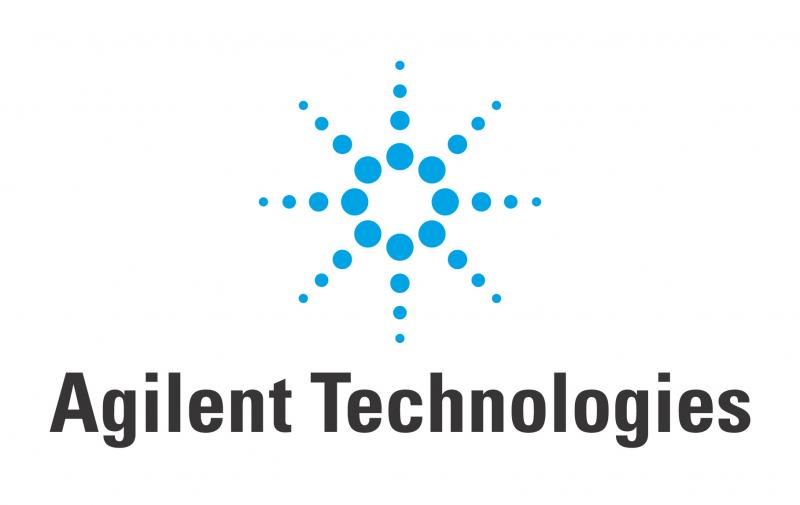
Description
Agilent Flash lamp for G1321A
Description
Agilent Snap top vial, 2 mL, amber with write-on spot

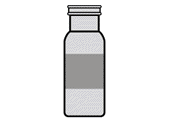
Description
View the full range of Greyhound Syringe Filters
Regenerated Cellulose Syringe Filters
Q-Fil Certified Syringe Filters
Q-Fil Certified Syringe Filters set the new Quality standard for today’s laboratory syringe filters Manufactured from the highest quality medical grade high density polypropylene, Q-Fil Certified Syringe Filters provide excellent chemical compatibility with acids, alcohols, bases, ethers, glycols, ketones and oils, with maximum operating temperatures of 135°C.
Every colour-coded filter is printed with the individual batch number, details of the membrane material and its pore size, on the outside rim of the filter, making them unique for traceability, GLPs and validation purposes.
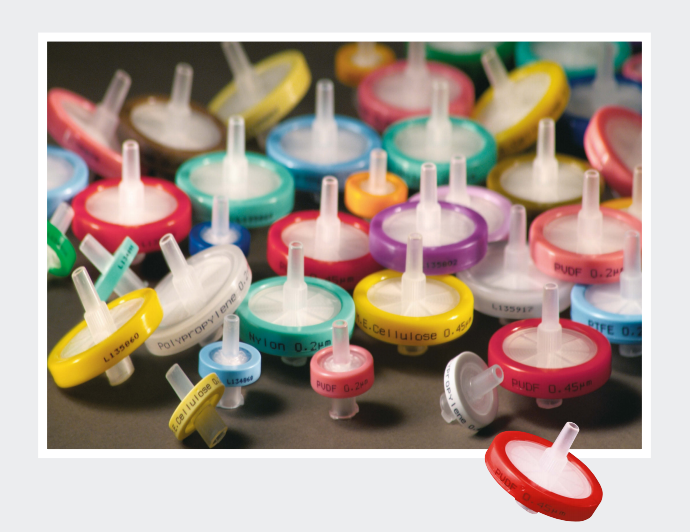
Why filter your samples for HPLC?
• To protect the HPLC column, the column inlet frits and capillary columns against blockage (plugging) caused by particulate matter in the sample
• To protect injection valves from damage caused by scratching and wear of the valves internal components, caused by harmful particulate matter in the unfiltered sample, thereby reducing instrument downtime.
About our Quality Control procedures
• Every batch of filters is tested by an independent laboratory to ISO 17025 quality procedures
• Every individual Q-Fil Certified Syringe Filter is visually inspected to ensure it meets our manufacturing and quality control specifications
• Samples of all our syringe filters and their respective raw technical data are stored for a period of 5 years from the date of manufacture for future reference
• Each batch of filters is tested prior to release for
- External Dimensions
- Bubble Point
- Burst Pressure
- Filter Integrity
- Water Flow Rate
- UV Extractables and compliance with all technical procedures
• Q-Fil Certified Syringe Filters are manufactured in compliance with ISO 9001:2000 quality procedures
• Every box is supplied with a Certificate of Analysis and Conformance to guarantee its batch to batch quality and performance
• The unique encapsulating process developed for these filters, forces the sample to pass only through the membrane, thus avoiding the possibility of leaks or contamination
• Available in the most popular sizes, porosities and membrane types
• Excellent resistance to all routinely used HPLC solvents
• Filter housings are manufactured from high density medical grade polypropylene
• Extremely low level of extractables for highly sensitive work
• Luer connections fully comply with ISO 594-1
• Filters are available with standard and ‘SlimTip’ sized outlets
Selecting the right Q-Fil Certified Syringe Filter
• Choose the size of filter based on the volume of sample to be filtered
• Choose the filters porosity based on the size of the potential particulates in the sample. It is important to be aware that the finer the porosity of the membrane the greater the pressure will be required to pass the sample through the filter. A sample containing large quantities of particulates is best filtered using a filter with a built-in glass fibre pre-filter
• Choose the type of membrane based on the solvent being filtered.
Filter Sizes
All our filters have female Luer Lock inlets and are available in three diameters -
Designed for large sample volumes or solvent filtration
Wide cross sectional area 3.55cm2
Maximum filtration volume >10ml
Maximum operating pressure 550 Kpa
Suitable for most applications
Filtration area of 0.95cm2
Maximum filtration volume 1 to 10ml Maximum operating pressure 750 Kpa Now available with ‘SlimTip’ (ST) outlet
Suitable for most applications Ideal for small samples <1ml Pore sizes of 0.20µm and 0.45µm
SlimTip Filters (ST)
13mm diameter syringe filters are now available with the new ‘SlimTip’ outlet for direct filling of microvials.
Pore Sizes
Q-Fil Certified Syringe Filters are available in 0.20µm and 0.45µm pore sizes. The 0.20µm filters remove the smallest particulates whilst the 0.45µm filters are designed to remove particulates which would be detrimental to most analytical columns.
Pre-filters (page 6) have a glass microfibre membrane which is chemically inert and resists most solvents. Q-Fil glass microfibre pre-filters are recommended for removing large particulates from the sample and are ideal for dissolution tests.
Glass microfibre membranes are also available mounted before the microporous filter membrane in the polypropylene housing. The glass pre-filter removes the larger particulates and prevents premature clogging of the filter.
CONTACT US
Tel: +44 (0) 151 649 4000
Web: www.greyhoundchrom.com
Email: marketing@greyhoundchrom.com
FOLLOW US




YOU MAY ALSO BE INTERESTED IN OUR NEWSLETTER
SIGN UP HERE

CATALOGUE DOWNLOADS







